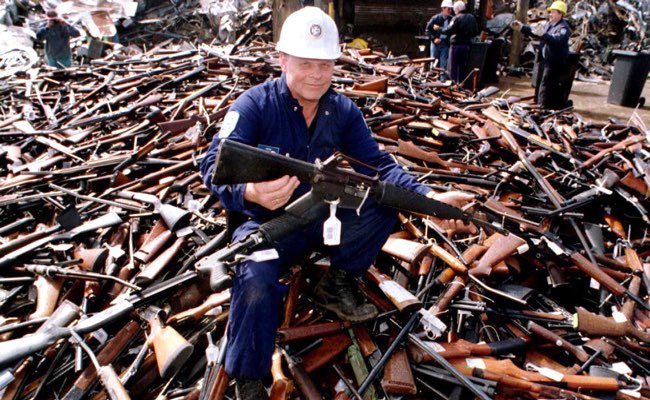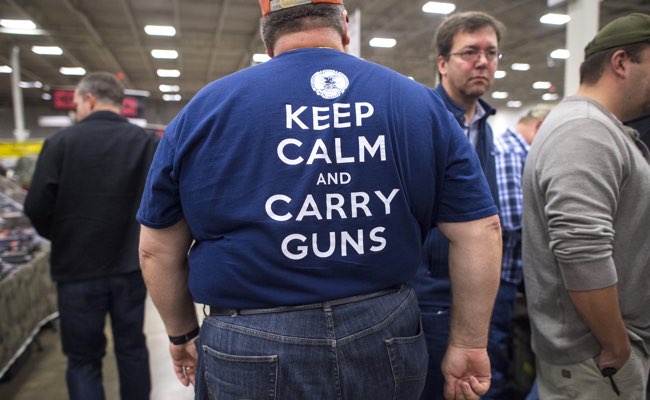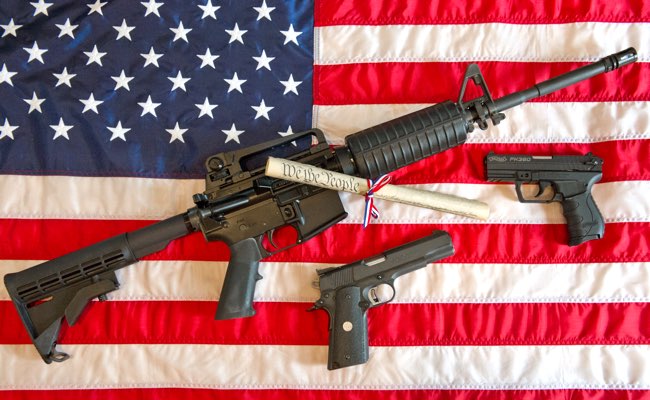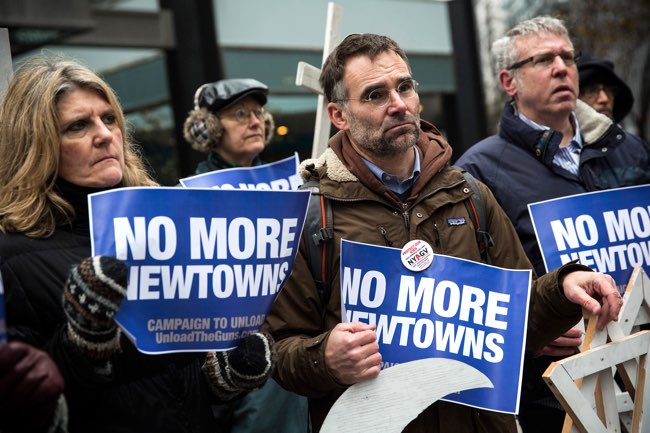
The photo above shows a famous moment in Australian history. In 1996, Australia enacted their National Firearms Agreement (NFA), which outlaws automatic and semi-automatic rifles along with pump-action shotguns. This drastic action followed after the Port Arthur massacre. Part of the NFA included a massive, federally-funded buyback program. This program gathered up 600,000 guns from the people in Australia. In the decade that followed, firearm homicides and suicides fell by 59 percent and 65 percent, respectively. No mass shootings have occurred in Australia over the past two decades.
In the United States (where guns now outnumber people), it’s hard to imagine a buyback program working due to the sheer size of such an undertaking. In 2013, there were about 357 million guns compared to 317 million people. That number has certainly grown after 2015’s Black Friday sales saw a 5% increase in gun sales compared to a year ago. FBI tracking records show a background check conducted once every two seconds (which only accounts for legal gun sales).
Guns are part of American history and culture. So are mass shootings. Will the San Bernardino massacre have any effect on the nation’s worship of guns?

On Sunday morning, the New York Times published the words of Samuel Walker, who spoke of America’s “worship” of firearms: “It’s like a religious object, an extension of your body. We can’t begin to make any progress in controlling it.”
True? Consider this. In late November, the Art of Manliness blog gave up in the face of near daily mass shootings. The website published a detailed set of instructions on how to flee from an active shooter (or try to diffuse the situation when escape is impossible). While such an article is practical, it’s sad that things have come to this end.

On Friday, we talked about how Aussie comedian Jim Jefferies performed a stand-up routine about how the United States failed to take action after the Sandy Hook tragedy. This was a tipping point for America, one where we had a clear signal that something needed to give. Instead, there was a shrugging of shoulders, and mass shootings have continued on a regular basis. After Sandy Hook, President Obama asked, “Are we really prepared to say that we’re powerless in the face of such carnage, that the politics are too hard?” Evidently so. The latest massacre in San Bernardino saw a weary President Obama delivering his 15th such address.
The situation has grown so dire that The New York Times ran its first front-page editorial since 1920. The piece called for gun control, and the paper also published a lengthy exploration of Australia’s NFA. The legislation came at the hand of conservative Prime Minister John Howard. There have been no mass shootings in Australia since the NFA, but there have been close calls:
A test of those laws came in December 2014, when a gunman who had expressed sympathy for Islamic extremism took hostages in a cafe in Sydney. The assailant, Man Haron Monis, brandished a sawed-off, pump action shotgun that he had obtained illegally. An inquest said the gun may have been in circulation before pump action shotguns were essentially banned in 1996 and was never confiscated in the buyback. His shells were 15 to 20 years old. Mr. Monis fired several times, once into a wall, before killing the cafe manager. Police stormed in, killing the gunman and another hostage in the crossfire.
Can incidents like this be prevented when people will always find a way to acquire illegal weaponry? Likely not. However, the NYT digs deep into the statistics to prove they’re no exaggeration. Before 1996, Australia did have fewer mass shootings than the U.S. (12 mass shootings in 18 years, as opposed to the U.S.’ near daily incidents), but the NFA is still considered a dramatic success. Interestingly enough, former Prime Minister Howard wrote in a 2011 op-ed how the U.S. could never handle the NFA:
“Americans truly believe that it is safer to own a gun, based on the chilling logic that because there are so many guns in circulation, one’s own weapon is needed for self-protection. To put it another way, the situation is so far gone there can be no turning back.”
Howard wrote the letter in response to the theater shooting in Aurora, Colorado. That was his point of no return, but in fact, the U.S. has experienced countless mass shootings since then. Sandy Hook should have been the wake up call America needed in 2012, but nope.

The U.S. will not heed the studies that correlate the NFA’s passage with dramatically lowered gun-related homicides and suicides. Nor do the lowered robbery rates matter. And people certainly don’t notice that home invasions didn’t ramp up after the NFA, which is what critics feared would happen (seeing as fewer home owners would own guns for self protection). In addition, Snopes has a nice example of a fabrication that someone penned to try and discredit the NFA’s effects.
There are still small pockets of doubt within Australia. Tiny pockets. In 2013, the National Rifle Association interviewed Liberal-Democratic Australian senator David Leyonhjelm, who called Aussies a “nation of victims.” Leyonhjelm insists that a “very vigorous black market for guns” still exists, so “if you want a gun, you can get one.” He personally owns two shotguns and remains “in awe of the success of the NRA at holding back the tide and it never gives an inch.” Whereas former Prime Minister Howard told the New York Times the NFA is alive and well: “There should be no relaxation, complacency or compromise. That is the view of people all around Australia.”
Australia remains the gun-control standard everyone’s talking about, rather than a harsher example like Japan. Their 1958 legislation (“no person shall possess a firearm or firearms or a sword or swords”) has been productive, as Japan sees only a couple of annual gun-related homicides. You can still get a gun in Japan, but the steps to do so are exhaustive. The U.S. would never accept such harsh laws, but something must give. Perhaps Australia’s example of proving a compelling reason for gun ownership (other than “self defense”) is a reasonable compromise. Even Scotland adopted stricter gun laws after its own 1996 watershed massacre. Is there hope for the United States to curb gun violence, or will it always remain a matter of “cold dead hands”?
(Via New York Times)
